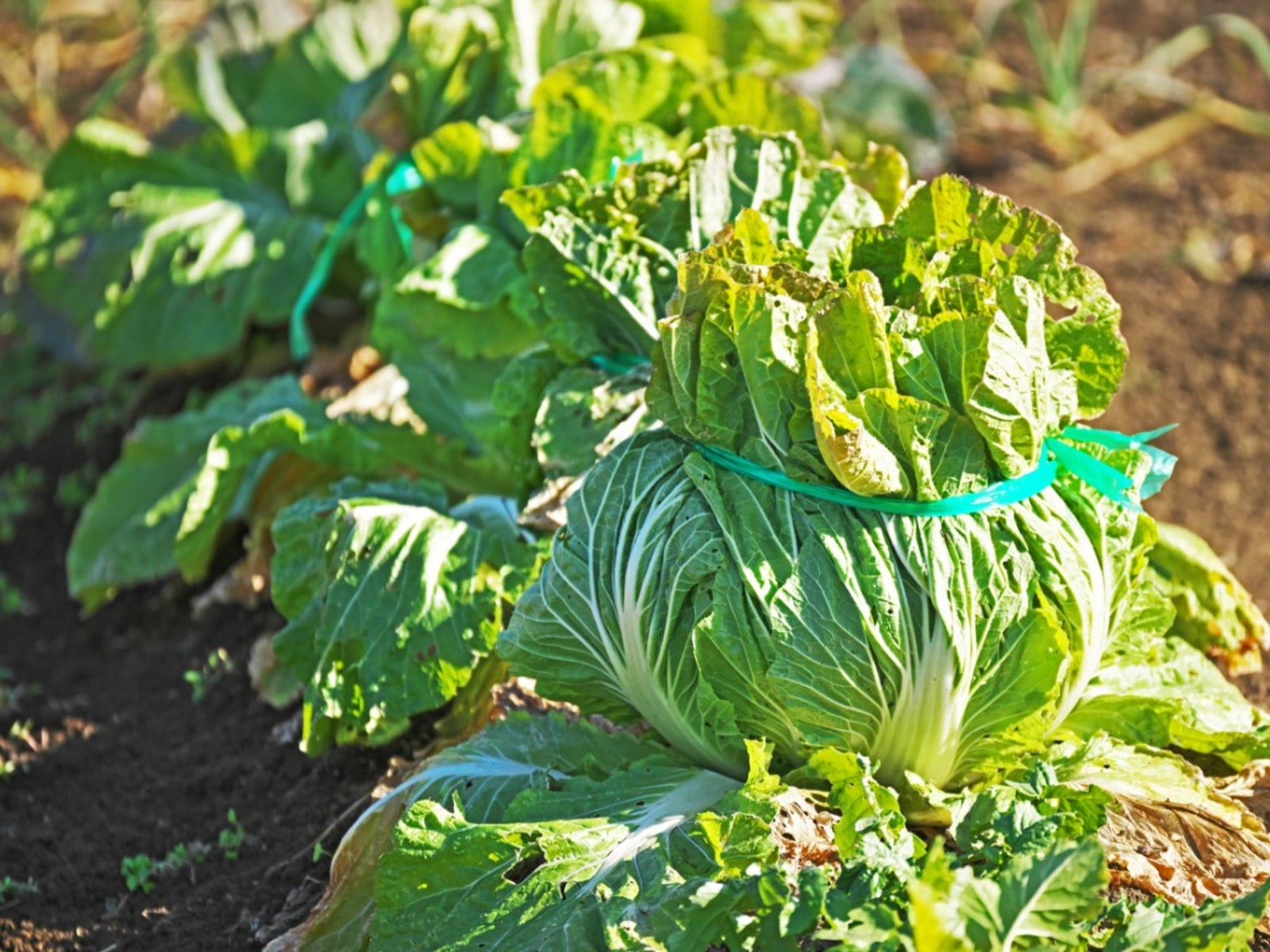Tying Up Cabbage Leaves: Do You Have To Tie Up Cabbage Heads

Cabbages are cool weather crops, hardy and best grown in the spring and fall. Cabbages are a member of the cole crop family that includes broccoli, cauliflower, and Brussels sprouts. When growing these plants, the question of tying up cabbage leaves often presents itself. Let's learn more.
Cabbage Head Tying
Easy to grow, provided cool temperatures abound, cabbages are nonetheless havens for a variety of pests such as:
To avoid the ravage that accompanies their presence, it's important to keep the garden clean of debris that fosters pest infestation. Some people use panty hose to tie up cabbage heads to deter cabbage moths from laying their eggs, which in turn become pesky cabbage worms. While this will probably work - I have not personally tried it - do you have to tie up cabbage heads? Is there another reason, beyond pest determent, in tying cabbage plant leaves?
Do You Have to Tie Up Cabbage?
No, there is no need for cabbage head tying. The cabbage will undoubtedly grow into a head without any interference from you. That being said, there are some varieties that can benefit from the tying up of cabbage leaves. Chinese cabbage, or Napa cabbage, is often tied up to engender a tighter head with whiter and tenderer leaves. This is sometimes referred to as “blanching.”
How to Tie Up Cabbage Heads
Use soft twine or other soft material to tie the cabbage heads and prevent damaging the outer leaves. Tie the cabbage head when it is almost mature and has a firm feel to it with large, loose outer foliage. Hold the inner leaves together with one hand while you tuck the outer leaves around the head. Then wrap the cabbage around the middle with the soft twine, creating a dense head. Tie the binding with a loose knot that can be easily opened when you harvest the cabbage head. Again, it is not strictly necessary to tie cabbage heads, but you may find doing so creates tighter, unblemished heads and in the process, deters the slugs and snails…or at least keeps them from eating the tender most inner leaves.
Gardening tips, videos, info and more delivered right to your inbox!
Sign up for the Gardening Know How newsletter today and receive a free copy of our e-book "How to Grow Delicious Tomatoes".

Amy Grant has been gardening for 30 years and writing for 15. A professional chef and caterer, Amy's area of expertise is culinary gardening.
-
 Grow ‘Karl Rosenfield’ Peony Plants For The Ultimate Frilly Border Beauties And Cut Flowers
Grow ‘Karl Rosenfield’ Peony Plants For The Ultimate Frilly Border Beauties And Cut FlowersFor frilly double magenta peony petals infused with a heady fragrance, grow ‘Karl Rosenfield’ peony plants. Here’s how to cultivate the ultimate plushy blooms
By Tonya Barnett
-
 10 Common Composting Problems That Can Spoil Your Garden Gold – Plus Easy Fixes
10 Common Composting Problems That Can Spoil Your Garden Gold – Plus Easy FixesLearn how to troubleshoot common composting issues before they ruin your stash – from bad smells and bugs to materials not breaking down as they should.
By Susan Albert